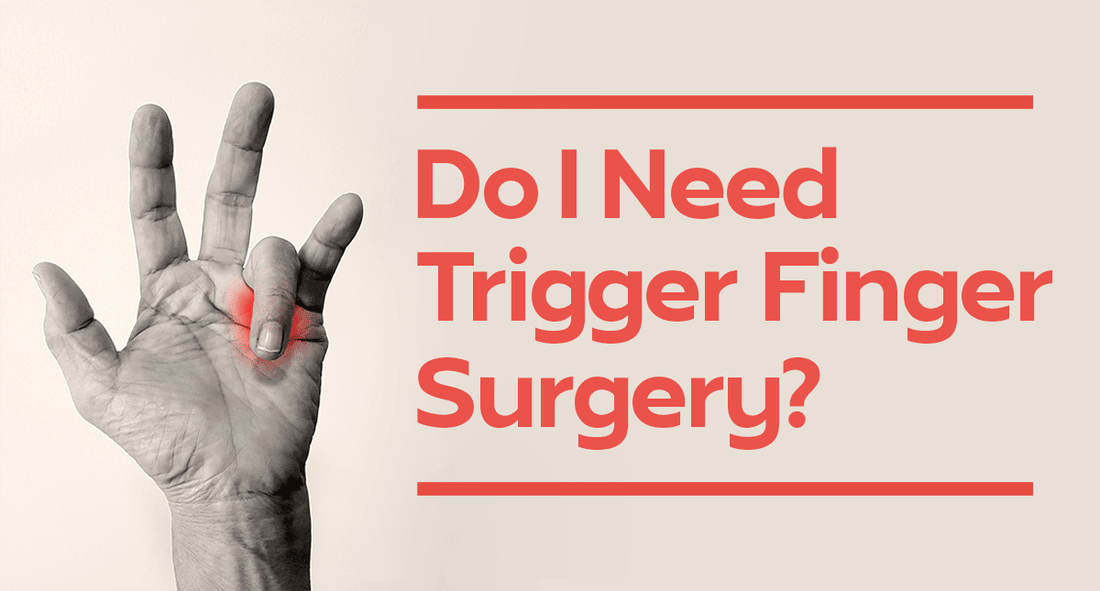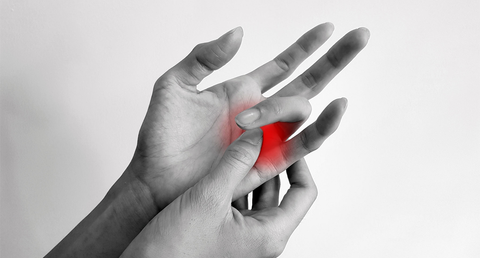Do I Need Trigger Finger Surgery?
- Hand Pain
- Pain Relief
- Trigger Finger

Trigger Finger is no picnic.
This uncomfortable and uninvited condition can cause painful swelling and “locking up” of the finger, making every day tasks difficult or impossible. While there are over-the-counter treatments available, for some people these are simply not enough.
If this sounds like you, don’t panic: we’re here to help.

Trigger Finger is a painful condition that is seen in those who have repetitive motion careers (factory workers, musicians, typing-heavy jobs), or those who suffer from arthritis, diabetes, carpal tunnel, or, heck, pregnancy. Trigger Finger affects 2-3% of the population (and up to 10% for diabetics).
Many over the counter treatments exist for trigger finger, and most people can find relief using splints, gloves, or over-the-counter medication.
Sometimes, however, the inflammation and pain does not go away with simple at-home treatments. In this case, your doctor may recommend trigger finger surgery.
Talking to Your Doctor
Before you make the move to trigger finger surgery, it is a good idea to consult your doctor. We want to empower you with the tools to speak to a medical professional! First, be prepared to let your doctor know how long you’ve suffered from trigger finger pain, and which treatments you’ve already tried.

Related conditions will also be discussed, as well as your job and hobbies. In order to be a candidate for surgery, it is likely you will have had to exhaust all other options.
It is important to find a doctor you trust, who is looking out for your health and best interests. It is unusual a doctor would jump right to surgery - at-home treatments are often effective and steroid injections in the inflamed area have been known to reverse trigger finger. Make sure other options are explored before surgery!
Trigger Finger Surgery
If it is determined you are a candidate for surgery, you can expect a relatively easy outpatient procedure. Still, the prospect of surgery doesn’t make most people jump for joy, so here’s a quick overview of what to expect to help reduce your anxiety.
Generally, trigger finger surgery requires only a local anesthesia. This means the surgeon will numb your hand, and you will be awake during the procedure - but unable to feel any pain.

That’s it! The whole procedure is relatively painless and takes only a few minutes. And then you should absolutely treat yourself to ice cream or a cheat meal or a day in front of the television watching your favorite trash reality TV show.
The good news is that following surgery you should experience relief immediately. Once the sheath has been cut, the patient should be able to move the finger again normally (though please go slowly and gently!).
Recovery is equally easy, and your doctor should provide you with aftercare instructions. You may require some pain medication or an antibiotic, and resting the finger is still important. However, relief should be instant, and you’ll be back to the original you in no time at all.
Visit here for more information on trigger finger and related conditions.
Written by: Jess Krzyczkowski
Medically Reviewed by: Dr. Ben Frederick
Continue Reading
View All
Our New Copper Infused Elbow Sleeve
We are so excited to introduce our new Copper Elbow Sleeve. Watch this short video to learn why this is the best cho...
- Joint Pain
- Pain Relief
31 Reasons to Make Compression Gloves Your Soulmate
If you have hand pain, your soulmate might be a pair of compression gloves. Support, compression, copper compression ...
- Arthritis
- Carpal Tunnel
- Hand Pain
- Pain Relief
How to Fight Carpal Tunnel (and Win!)
Carpal Tunnel Syndrome is a painful condition that causes numbness, weakness, and pain in the hands and wrists. There...
- Carpal Tunnel
- Hand Pain
- Pain Relief